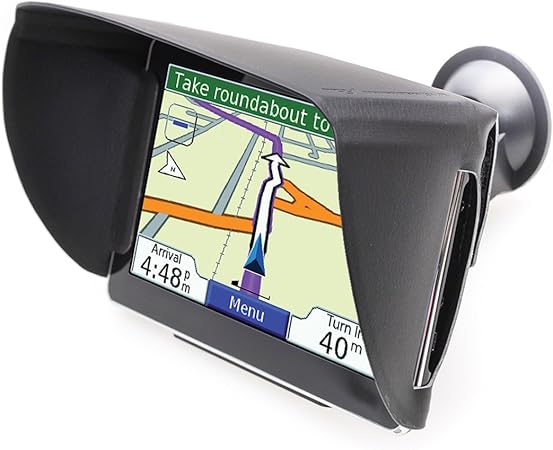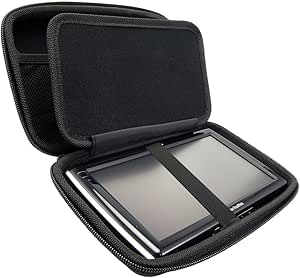Navigating complex intersections can be a stressful experience, even for seasoned drivers. But thanks to the sophisticated technology embedded in modern car GPS navigators, this once-daunting task has become significantly easier. This article delves into the intricacies of how these systems handle complex road layouts, explaining the technology behind their guidance and offering tips to maximize their effectiveness.
Understanding the Challenge: More Than Just Four Ways

Simple four-way intersections are relatively straightforward. However, modern roadways often feature multi-lane roundabouts, confusing cloverleaf interchanges, and complex highway merges, each posing unique navigational challenges. These intersections involve multiple lanes, various turning movements, and often unexpected merging points. A GPS navigator’s success in these situations depends on a combination of accurate mapping data, sophisticated algorithms, and a clear, user-friendly interface.
The Role of Mapping Data: The Foundation of Accurate Navigation

At the heart of any GPS navigator’s ability to handle complex intersections is its map data. This data isn’t just a simple representation of roads; it’s a highly detailed model incorporating lane information, turn restrictions, speed limits, and even the location of traffic signals and signs. The accuracy of this data is crucial. Inaccurate or incomplete mapping can lead to incorrect routing, potentially directing a driver into the wrong lane or even onto a road that’s inaccessible.
High-quality map data is constantly updated by mapping providers like Google Maps, TomTom, and HERE. These updates account for changes in road layouts, new construction, and modifications to traffic flow patterns. The frequency of these updates is a key factor in the reliability of a GPS navigator’s guidance, especially in rapidly changing urban environments.
Algorithms and Route Planning: Finding the Optimal Path

Once the map data is loaded, the GPS navigator uses sophisticated algorithms to plan the optimal route. These algorithms consider various factors, including distance, estimated travel time, and real-time traffic conditions. For complex intersections, the algorithm doesn’t just identify the correct road to take; it also determines the appropriate lane to be in well in advance, providing ample time for drivers to adjust their position.
Many systems utilize “lane guidance,” visually guiding the driver into the correct lane using arrows or other visual cues displayed on the screen. This is particularly helpful at complex interchanges where multiple lanes merge or diverge. Advanced systems may even incorporate turn-by-turn voice guidance that precisely identifies which lane to occupy at each stage of the maneuver.
Dealing with Unexpected Circumstances: Real-Time Traffic and Dynamic Route Adjustments
Even with accurate mapping and sophisticated algorithms, unexpected events can occur. Real-time traffic data feeds are critical for handling these situations. If a significant traffic jam or accident occurs near a complex intersection, the GPS navigator can dynamically adjust the route, suggesting an alternate path to avoid delays. This adaptive functionality ensures the navigator provides the most efficient and timely navigation, even in unpredictable conditions.
User Interface and Feedback: Clear Communication is Key
A well-designed user interface is crucial for a seamless navigation experience, especially during challenging maneuvers. The display should clearly show the upcoming intersection, highlighting the correct lane and providing ample warning before any necessary lane changes. The visual cues should be intuitive and easy to understand, even under stressful driving conditions.
Many systems also incorporate user feedback mechanisms, allowing drivers to report errors in the map data or suggest improvements to the routing algorithm. This continuous feedback loop helps maintain the accuracy and reliability of the GPS navigation system over time.
Comparison of GPS Navigation Systems: Feature Highlights

While the core functionality of GPS navigation is largely similar across different systems, variations exist in the sophistication of their algorithms, the quality of their map data, and the features they offer. Some systems offer more advanced lane guidance, while others excel in their ability to handle real-time traffic updates. Consider factors like map updates frequency, integration with other apps (e.g., music, phone calls), and user interface customization when choosing a navigation system. Research user reviews to gain insights into the strengths and weaknesses of each system.
Tips for Using Your GPS Navigator at Complex Intersections
While modern GPS navigators are remarkably capable, it’s still crucial to remain attentive and engage in safe driving practices. Here are some helpful tips:
- Pay attention to the visual and audio cues: Don’t simply rely on the GPS; actively monitor the screen for lane guidance and listen to the voice instructions.
- Plan ahead: If you’re unfamiliar with the route, review the upcoming maneuvers on the map beforehand.
- Adjust your speed accordingly: Allow yourself ample time to make lane changes safely and smoothly.
- Be mindful of other drivers: Always be aware of your surroundings and ensure your maneuvers don’t endanger other vehicles.
- Update your maps regularly: Ensure you’re using the most up-to-date map data for optimal accuracy.
In conclusion, while the technology behind GPS navigation continually evolves, understanding how these systems handle complex intersections allows drivers to leverage their capabilities effectively. By using a high-quality navigator, staying attentive, and following safe driving practices, navigating even the most challenging road layouts becomes significantly less stressful and more efficient.